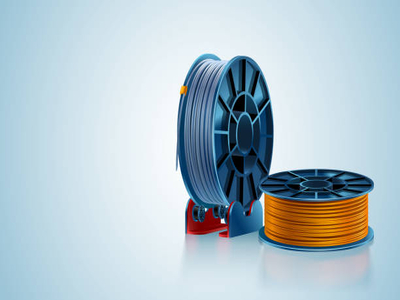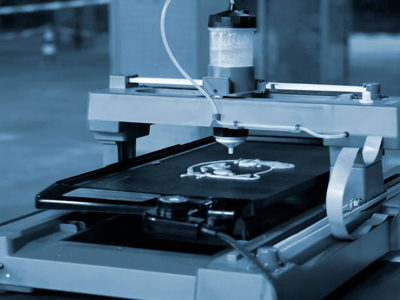Which is better for your 3D prints, PLA vs TPU?
This article will explore the differences between PLA and TPU filaments to help you decide which one is the best for you.
PLA Vs TPU: What Are They?

PLA and TPU are two very different materials often used for various applications.
PLA
PLA, or polylactic acid, is a biodegradable thermoplastic made from renewable resources like corn starch, sugarcane, or potatoes.
This material has many desirable qualities, including its moisture resistance, durability, and pliability.
Read our PLA Filament Reviews to see the top options on the market today!
TPU
TPU, or thermoplastic polyurethane, is an elastomeric polymer typically produced from fossil fuels like oil.
While pliable and flexible like PLA, TPU also has excellent strength properties and is more easily molded into complex shapes.
Read our TPU Filament Reviews to see our favorite picks!
PLA Vs TPU Compared
If you are new to the world of 3D printing, then you may be wondering what material you should use for your project.
Two of the most popular options are PLA and TPU, and both have unique benefits that make them ideal for different applications.
For example:
- PLA is a biodegradable plastic made from renewable resources like cornstarch. It’s easy to print with and has a low melting point, making it ideal for projects that require fine detail.
- TPU is a durable and flexible plastic used for many applications. It’s more challenging to print than PLA, but can withstand higher temperatures and is less likely to break or crack.
So, which one should you use for your project? It depends on what you need it for.
Durability vs Ease of Use
If you need a durable and robust part, TPU is the way to go.
If you need a component that is easy to print with and doesn’t require much detail, then PLA will suffice.
Ultimately, the decision comes down to personal preference and the specific needs of your project.
No matter which one you choose, you can be confident that both PLA and TPU are reliable and practical materials for 3D printing.
What about using both in a 3D printing process?
This video does just this, creating a PLA part with foaming TPU to develop a strong hook.
Cost Difference
Here’s a quick rundown of the cost difference between PLA and TPU filaments:
- PLA is usually the cheaper option, with prices typically ranging from $20 to $30 per kilogram.
- TPU tends to be more expensive, with prices often starting at around $40 per kilogram.
How To Choose The Right Filament

Here are a couple of things to keep in mind when choosing a filament:
What Color Filament Are You Using?
Think about the color of the filament you want to use.
Some filaments are available in a wide range of colors, while others are only available in a limited number of colors.
If you’re looking for a specific color, check that the filament you’re considering is available in that color.
What’s Your Price Range?
Filaments can range in price from a few dollars per pound to over $100 per pound.
In general, cheaper filaments are lower in quality and may not produce as high-quality prints as more expensive filaments.
However, there are some high-quality cheap filaments available today.
The Type of Plastic
A few factors can affect the price of PLA and TPU.
For example, the type of plastic used in the filament can affect the price.
Cheaper plastics will result in a more inexpensive filament, while more expensive plastics will result in a more expensive filament.
Manufacturing and Quality Control
The manufacturing process and quality control can also impact the cost.
In general, higher-quality filaments will be more expensive than lower-quality filaments.
Ultimately, it’s up to the buyer to decide which material is worth the investment.
Final Words
When it comes to choosing between PLA vs TPU, the choice can be overwhelming.
On the one hand, PLA is an inexpensive and easy-to-print material made from simple plant-based polymers.
On the other hand, TPU is an elastic and flexible material perfect for parts that need a bit more give.
Articles You Might Enjoy Reading: